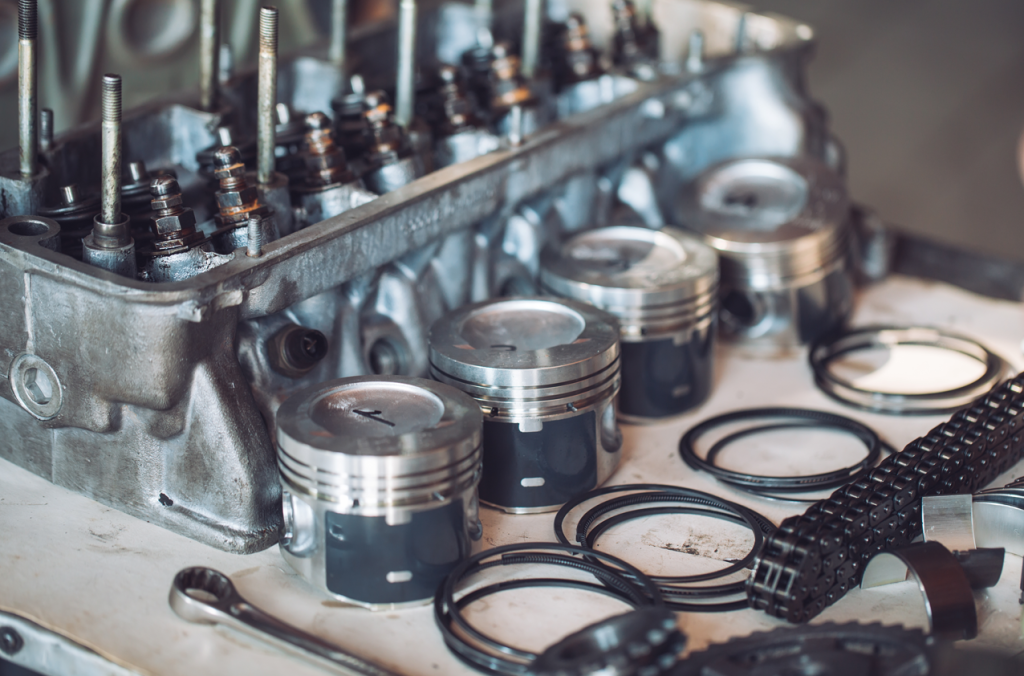In the world of high-performance engines and demanding industrial applications, material selection is paramount. Every component must withstand extreme conditions without failure. Piston rings, though small, are critical for sealing the combustion chamber, regulating oil consumption, and transferring heat. While various materials are used, stainless steel has emerged as a preferred choice for many engineers.
In this blog, let’s explore the essential features that make stainless steel piston rings a superior option for critical applications.
Their Exceptional Resistance to Corrosion
One of the most significant advantages of stainless steel is its inherent ability to resist corrosion and oxidation. Piston rings operate in a harsh environment filled with combustion byproducts, moisture, and aggressive chemicals from fuel and lubricants. These elements can quickly degrade lesser materials, leading to pitting, rust, and ultimately, ring failure. Stainless steel, particularly chromium-rich alloys like the 440 series, forms a passive, self-repairing chromium oxide (Cr2O3) layer on its surface.
This invisible film acts as a formidable barrier against corrosive attacks, ensuring the ring maintains its structural integrity and sealing capability over extended periods, even in engines using alternative fuels that can produce more corrosive condensates. This resilience translates directly to longer engine life and reduced maintenance intervals.
Their Unmatched Strength at High Temperatures
Engines and compressors generate immense heat, and piston rings must maintain their mechanical properties under these extreme thermal loads. Stainless steel alloys are renowned for their high-temperature strength and dimensional stability. Unlike cast iron, which can lose its tension and hardness when subjected to high operating temperatures, stainless steel retains its elasticity and wear-resistant characteristics.
This property, known as hot hardness, is crucial for preventing ring collapse and flutter at high RPMs. The material’s ability to resist thermal fatigue and creep ensures a consistent seal against the cylinder wall, which is vital for maintaining compression, optimizing fuel efficiency, and minimizing blow-by gases. This thermal robustness makes stainless steel the go-to material for turbocharged, supercharged, and other high-output applications.
Their Superior Durability and Wear Characteristics
The continuous sliding motion against the cylinder liner subjects piston rings to intense frictional forces and abrasive wear. Stainless steel exhibits excellent wear resistance, a critical factor for longevity. The material’s hardness, combined with its smooth surface finish potential, reduces the coefficient of friction between the ring and the cylinder bore. This not only minimizes wear on the ring itself but also on the cylinder liner, which is a far more costly component to replace.
Furthermore, many stainless steel rings receive advanced surface treatments or coatings, such as gas nitriding or physical vapor deposition (PVD) coatings like chromium nitride (CrN), to further enhance their surface hardness and lubricity. This results in a component that can endure millions of cycles without significant material loss, ensuring reliable performance and a stable seal throughout the engine’s service life.
Their Excellent Compatibility with Modern Cylinder Liners
The synergy between the piston ring and the cylinder liner material is critical for optimal performance. Stainless steel rings demonstrate excellent compatibility with a wide range of modern cylinder bore materials and coatings, including nikasil, alusil, and plasma-sprayed liners. Its properties help establish a quick and effective break-in period, allowing the rings to conform perfectly to the cylinder wall for a superior seal.
Because of their controlled hardness and smooth finish, they are less aggressive on these advanced liner coatings compared to some other ring materials. This compatibility minimizes the risk of scuffing and scoring, which are catastrophic failure modes that can destroy an engine. The ability to work harmoniously with these advanced surfaces makes stainless steel rings a versatile choice for a variety of modern engine designs.
Their Customization for Specialized Applications
Not all applications are the same, and the ability to tailor a component’s properties is a significant engineering advantage. Stainless steel’s alloy composition can be precisely controlled to achieve specific performance characteristics, such as increased tensile strength, enhanced flexibility, or specific thermal expansion rates. This versatility allows for the design of piston rings that are perfectly matched to the unique demands of a particular engine or compressor.
This level of precision is where manufacturers, like AD Piston Ring, leverage their material science expertise to engineer and produce custom stainless steel rings that meet stringent OEM and aftermarket performance criteria. This way, experts can ensure the final product delivers on its promise of superiority. These also engineer every critical parameter—from the ring’s cross-sectional profile (such as keystone or rectangular designs) and its precise radial tension to the application of advanced surface coatings designed to minimize friction against a particular cylinder liner.
The decision to use stainless steel piston rings is backed by sound engineering principles. Their combined resistance to corrosion, high-temperature strength, superior wear characteristics, and design flexibility provide a level of performance and reliability that other materials often cannot match. For engineers seeking to maximize engine longevity, efficiency, and power output, stainless steel remains an intelligent and indispensable choice.






